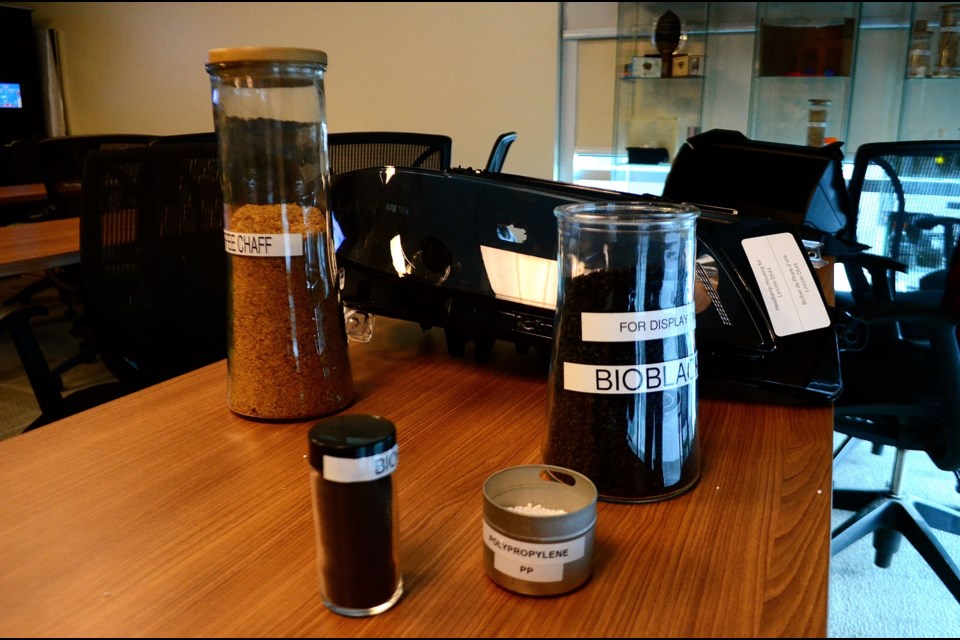When GuelphToday visited professor Amar K. Mohanty in the summer of 2016 at the University of Gueph's Bioproducts Discovery and Development Centre, he told us about his ground-breaking research with biocarbon materials.
At the time, Mohanty and his research team were developing a biodegradable alternative to plastic for producing compostable coffee pods.
The Purpod 100 technology allowed coffee manufacturers to redirect as many as 15 billion single-use plastic coffee pods away from landfill each year and earned Mohanty and his team the 2016 LAAIR Innovation of the Year Award at the University of Guelph.
Two weeks ago, on Dec 4, Ford announced they are using the same patented technology to make headlamp housings and are considering using it to make other eco-friendly, fuel-efficient parts for their vehicles.
“Remember this is not biodegradable,” said Mohanty. “It is durable. It is “bio-best’. People often get confused about that. The coffee pod is biodegradable, but we don’t want the automotive parts to be biodegradable.”
The U of G holds as many as five biocarbon technology patents on products and processes developed by Mohanty and his team and they have licensed the technology to Competitive Green Technologies in Leamington.
“They produce black pellets that are sent to an injection moulding company, Varroc Lighting Systems in Michigan, that produces the parts for Ford,” said Mohanty. “This particular material is lower cost and more stable than the existing material they use. Many other parts of the car can use this biocarbon technology.”
One reason the material is cheaper is that it is made from waste, specifically coffee chaff, the discarded skin from coffee beans.
“It is food industry waste and the coffee industry, typically, pays to get rid of it.,” said Mohanty. “Ford decided to go with the coffee chaff because they want to make a supply chain with McDonald’s but my technology can be used with a broad range of waste biomass including coffee chaff, miscanthus, sawdust and other agriculture residues.”
According to Ford, the chaff composite meets manufacturing specifications for headlamp housings and other interior and under-hood components.
“The resulting components will be about 20 per cent lighter and require up to 25 per cent less energy during the moulding process,” said Ford in a Dec 4 press release. “Heat properties of the chaff component are significantly better than the currently used material.”
One of the benefits of biocarbon material is that it can be processed using existing industrial facilities.
“They use injection moulding to make this particular part,” said Mohanty. “They have spent millions of dollars on the injection moulding facilities they have and they don’t want to change it.”
The biocarbon material is mixed with polypropylene as a filler to make the plastic stronger.
“Typically, they use polypropylene and talc,” said Mohanty. “Talc is a mineral filler and it is non-renewable. The material we are using is renewable. It is produced every year and becomes waste.”
It is as strong or stronger than the talc composite plastic and a lot lighter.
“Talc is a very dense material,” he said. “The automotive industry needs lighter parts to improve fuel efficiency. In this particular part it is about 20 per cent lighter.”
It also allows them to eliminate the use of a petroleum-based colourant called carbon black.
“Many parts inside a car are black in colour,” said Mohanty. “When they use polypropylene and talc they get a whitish-brown colour and they have to add the colourant to make it black. Carbon black is not very eco-friendly so, they want to phase it out as much as possible. This material provides more stiffness and the blessing in disguise is that it is already black so, we don’t need any carbon black.”
Mohanty has been researching biocarbons for about eight years.
“I started this work four years back and we passed through a lot of testing with more intensive work done in the past two years,” he said. “The process is called pyrolysis, which means we burn the waste biomass in absence of oxygen somewhere in the area of 500 C to 700 C or higher. We convert it to a powder we called biocarbon.”
That is as much about new eco-friendly material and the patented process he was willing to share.
“There is not only polypropylene and biocarbon,” he said. “There are other things mixed with it to make it a very strong material. There are additives and chemicals and the formula is patented by the university.”
As pressure to reduce waste and greenhouse gas emissions grows so do the potential applications for using biocarbon products.
“There are more than 40,000 different parts in a car,” said Mohanty. “They have nylon and several plastics but now this biocarbon technology is more attractive to the automotive industry. The lighter weight improves fuel efficiency and reducing the amounts of plastics also helps in reducing greenhouse gas.
"We have patents for making other plastic materials using biocarbon compounds. This is just one of the patents”

